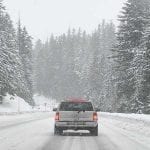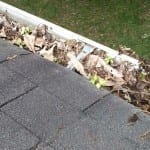
How To Make a Home Emergency Kit
It’s easy to put off preparing for a weather emergency, but when Mother Nature strikes, it may be too late. You and your family may have to evacuate at a moment’s notice.
It’s important to plan ahead to provide for your family so be ready for extreme weather by assembling a home emergency supply kit. Gather and store the listed items below and you’ll be ready for the next weather crunch.
Emergency Essentials
Relief workers will be on the scene after a weather emergency but they can’t reach everyone immediately. Therefore, basic services such as electricity, water, gas, phones, and sewage treatment may be out for a week or more.
Food, water and safe air to breathe is top priority if a weather emergency occurs.
A Basic Emergency Kit
Food
Store at least a three-day supply of non-perishable food. Choose foods that are ready-to-eat; foods that do not require cooking, refrigeration, water, or special preparation.
In addition, avoid salty foods that will make you thirsty. Keep in mind family members’ special dietary needs.
Good choices are:
- Canned foods (meats, vegetables, and fruits)
- Dry cereal or granola
- Dried fruit
- Nuts
- Salt-free crackers
- Canned juice
- Protein or fruit bars
- Infant formula or food for baby
Make sure to have a manual can opener on hand as well as eating utensils like paper plates, cups, and plastic cutlery. An additional item would be paper towels.
Water
Water is essential to survival. However, clean drinking water may be scarce or unavailable after a weather event.
Your city’s water source could be cut off or compromised because of contamination. So, it’s important to be prepared with enough stored water to meet your family’s needs.
One gallon per person, per day for a minimum of three days, for drinking and sanitation.
How to Prepare Containers of Water:
If you are storing tap water, then it’s recommended that you use food-grade water storage containers available at camping or surplus retailers. However, as an alternative, you can sanitize and re-use two-liter plastic soft drink bottles.
How to store tap water in plastic, two-liter bottles:
- Thoroughly clean the bottles with dishwashing soap and water; rinse thoroughly.
- Preparing Containers- To sanitize the bottles mix together a solution of 1 teaspoon of non-scented household chlorine bleach and one quart of water. Swish the sanitizing solution in the bottle, touching all interior surfaces. Then, pour out the solution and thoroughly rinse the bottle with clean water.
Filling Water Containers:
- Tightly close the bottles using the original twist cap. Avoid touching the inside of the cap due to possible contamination.
- Write the date on the outside of the bottle with a permanent marker. Store in a cool, dark place.
- Replace the water every six months to ensure freshness.
Types of water to store:
- Chlorinated water- If your water utility company adds chlorine to your drinking water, you’re set. Fill the bottle to the top with water.
- Non-chlorinated or well water- If you have non-chlorinated or well water, add two drops of non-scented liquid household chlorine bleach to each gallon of water. Mix and then fill bottles to the top.
Clean Air Essentials
- Dust mask, to filter compromised air
- Wrench or pliers to turn off possibly damaged utilities
Health
- Prescription medications and eyeglasses
- Moist towelettes, garbage bags with twist ties for personal sanitation
- Personal hygiene items – soap, toothbrush, toothpaste, deodorant, etc.
- Feminine supplies
- Diapers for baby
- First Aid kit plus a first aid book or other emergency reference material.
Warmth
- A complete change of clothing for each family member including:
- A long-sleeved shirt, pants, and sturdy, close-toed shoes.
- A jacket, coat, or thermal underwear if you live in a cold-weather climate.
- Sleeping bag or a warm blanket, and a small pillow for each person.
- Matches in a waterproof container
Safety
- Fire extinguisher
- A Battery-powered or hand-crank radio, plus extra batteries
- NOAA Weather Radio with tone alert
- Flashlights
- Whistle to signal for help
- A local street map
Financial
- Copies of insurance policies, personal identification, and bank account records kept in a waterproof container.
- Cash or traveler’s checks; loose change
Pets
- Three-day supply of canned or dry pet food and extra water
- A sturdy carrier, crate, or travel bag for transport
- Extra collar, harness, or leash
- Feeding dishes or disposable plastic bowls
- Litter
- Disposable litter trays
- Pet medicine
Also, refer to this handy checklist (pdf) at Ready.gov to build your weather supply kit.
Whether it’s tornadoes, floods, earthquakes, hurricanes, or fires, the key to survival is planning. Being prepared with a well-stocked emergency kit will give you and your family peace of mind and help you remain safe in an emergency.
After The Storm
Afterward, when it’s time to clean up you’ll want to make sure you eliminate any mold or mildew inside your home. Wet & Forget Indoor Mold+Mildew Disinfectant Cleaner is an easy-to-use, spray and wipe formula that cleans, deodorizes, and disinfects all the areas subject to mold and mildew.
Just spray the moldy surface, wait 10 minutes and wipe dry with a clean cloth or simply let it air dry.
You’ll also need to clean up mold and mildew from flooding and water damage outside the home. Wet & Forget Outdoor safely removes tough black and green growths from your home’s outdoor surfaces.
Furthermore, the gentle, bleach-free outdoor cleaner is easy to use. Just spray it on and leave it. No scrubbing, rinsing, or pressure washing is needed.
Wet & Forget goes to work properly cleaning the surface for you. Moreover, during storm clean-up this can be extremely helpful, homeowners and business owners can focus their efforts on the many other tasks necessary to get their lives back in order.
Images used from: ParatrooperArmyNavy, TheProvisionRoom,














